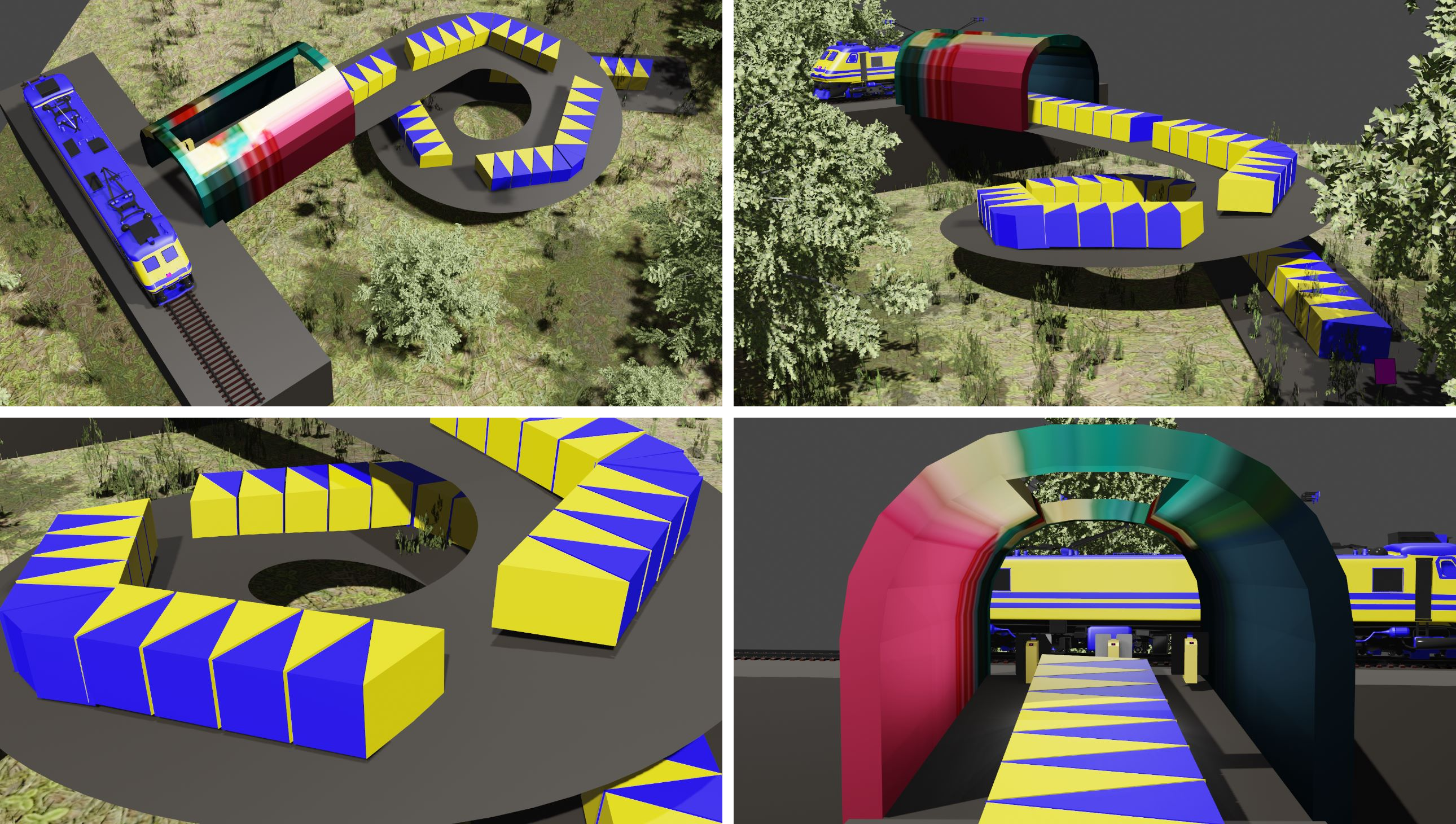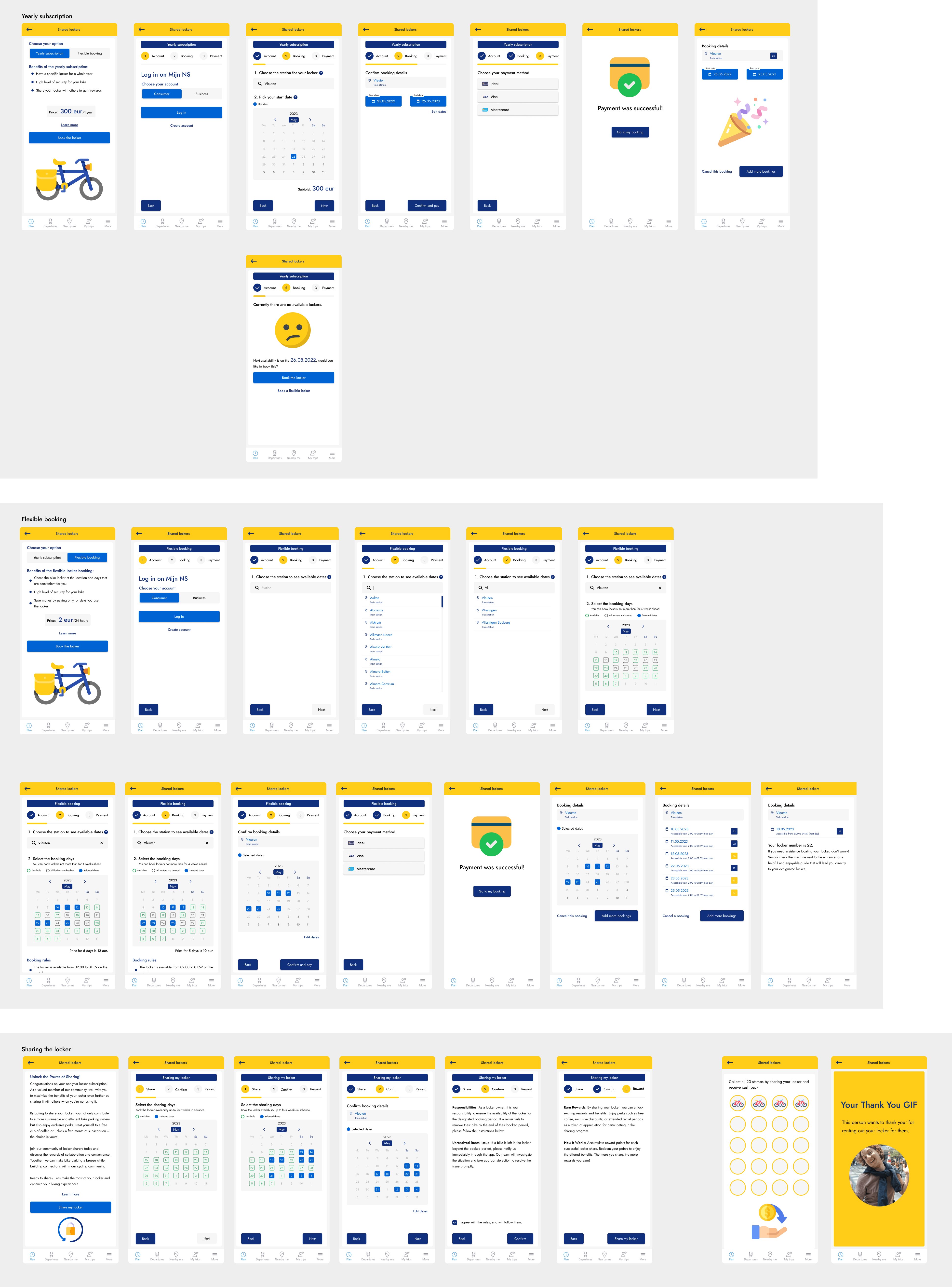 Portfolio
About me
Portfolio
About me
NS, the Dutch railway company, approached my team of 3 for a solution to create better bicycle parking at smaller stations. They wanted an innovative, user-friendly design that solves space issues and safety concerns. This design needed to be easily installable at any small Dutch station, adaptable to various bike types, and provide guaranteed, secure parking. Our focus was on the entire user journey, including bike and train travel, and exploring additional NS services. Ultimately, our goal was an affordable, sustainable solution that ensures commuter satisfaction and bicycle safety.
People in the Netherlands have the option to subscribe to a locker service provided by NS, which allows them to store their bikes safely at train stations. Currently, the design challenge is centered around the redesign of the existing bicycle lockers at small train stations in the country. The primary objective is to address the problem of long waiting lists, which can stretch for months. By studying the travel patterns and preferences of users, we can develop effective and innovative solutions to tackle this issue and enhance the user experience. By prioritizing efficiency, security, and reliability for the user, we can elegantly solve this problem.

The goal of our project is to better understand how people use the current bike lockers and other parking facilities for their bikes. We aim to see how bike commuters interact with these spaces so we can come up with design solutions that work best for them. By observing how users behave at the facilities and conducting other research methods, we can derive insights for potential solutions that meet the user's needs and render bike parking more UX-friendly.
To tackle our research questions, we employed a range of methods, including desk research, observation, interviews, user journey mapping, collages, service blueprints, and competitor analysis.
Insight 1: The rental process for lockers is lengthy and lacks locker availability
information.
The current locker rental process lacks transparency and can be frustrating for
users due to a lengthy form, unclear locker availability, and uncertain
communication. NS should enhance this process for a better user experience.
Insight 2: Commuters are more likely to rent a locker for their bicycles due to
negative experiences with unguarded bike racks.
During interviews with locker users, we found that many rented lockers due to past
bike theft or vandalism experiences, seeking security for their belongings.
Conversely, most non-locker users reported no such issues, even with expensive bikes
at stations. This suggests a "survivor bias" – locker users believe it's worth it
because they avoid theft, while non-locker users think the same for not renting.
Insight 3: The perceptions of convenience, efficiency, and safety associated with
parking options vary between users of lockers and bike racks.
During interviews about parking safety and convenience, we observed a disconnect
between what people claimed and the observed reality. Both groups of commuters
believed their parking method was the quickest and safest, but it was surprising to
hear this from non-locker users, given instances of bikes being mishandled.
Efficiency opinions also varied, with locker users claiming it's faster and
non-locker users stating the opposite. This suggests speed isn't the primary factor
when considering locker rentals.
Insight 4: The lockers are being used inefficiently - there is no flexibility in
renting the locker.
Through observations, we discovered that lockers are mainly used during work or
school hours, leaving them vacant on weekends and non-workdays. This leads to
waiting lists while rented lockers sit unused. Some lockers are used sparingly,
functioning more as storage units, accessed only weekly or monthly.
Insight 5: During peak hours, the cluttered and visually unappealing bike parking
area leads travelers to leave their bikes outside the designated parking area.
During the observation, we noticed the repeating pattern of random bike parking
around the dedicated area. Bikes are usually parked closer to the station during the
rush hours in the morning. Random bike parking is associated with a lack of
available racks closer to the station.

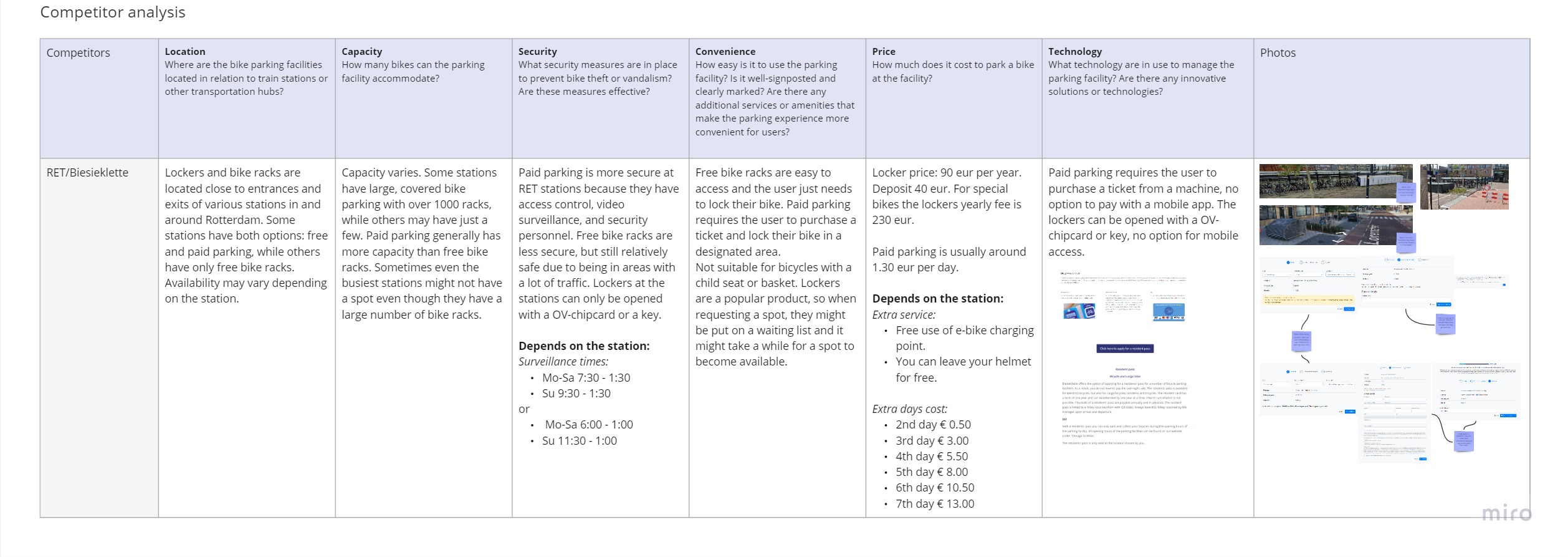
What made our design truly unique was our commitment to fostering a sense of community and trust. We aspired to create a warm and inviting shared space that welcomed everyone, regardless of whether they possessed an OV chip card. Our inclusive approach allowed us to forge meaningful connections between users and NS while fostering a strong sense of camaraderie among the users themselves. By embracing this inclusive mindset, we were able to further amplify the confidence and trust that users had in NS, ensuring that every individual felt secure and supported within our parking facility.
Integrating fun into our concepts was an exciting part of our design journey. When we presented our ideas to NS, they seemed genuinely enthusiastic about our more creative concepts. While practicality remained important, they encouraged us to maintain a sense of enjoyment and imagination in the final design. We understood the importance of striking the right balance, ensuring that the fun element was subtle, easily accessible, and brought immense joy to users. It didn't require a significant time commitment and was optional. This fun aspect aimed to provide users with a compelling reason to return regularly. Even if they had extra time before their train departure, they could engage with this delightful feature, adding a touch of joy to their day.
After we completed the research phase, we started the ideation process. From our insights, we were able to come up with 21 How Might We questions by using the Brain Dump method. The questions were clustered into groups, and finished with dot voting to narrow down the most insightful questions for the next step. The final questions can be seen in the yellow circle.
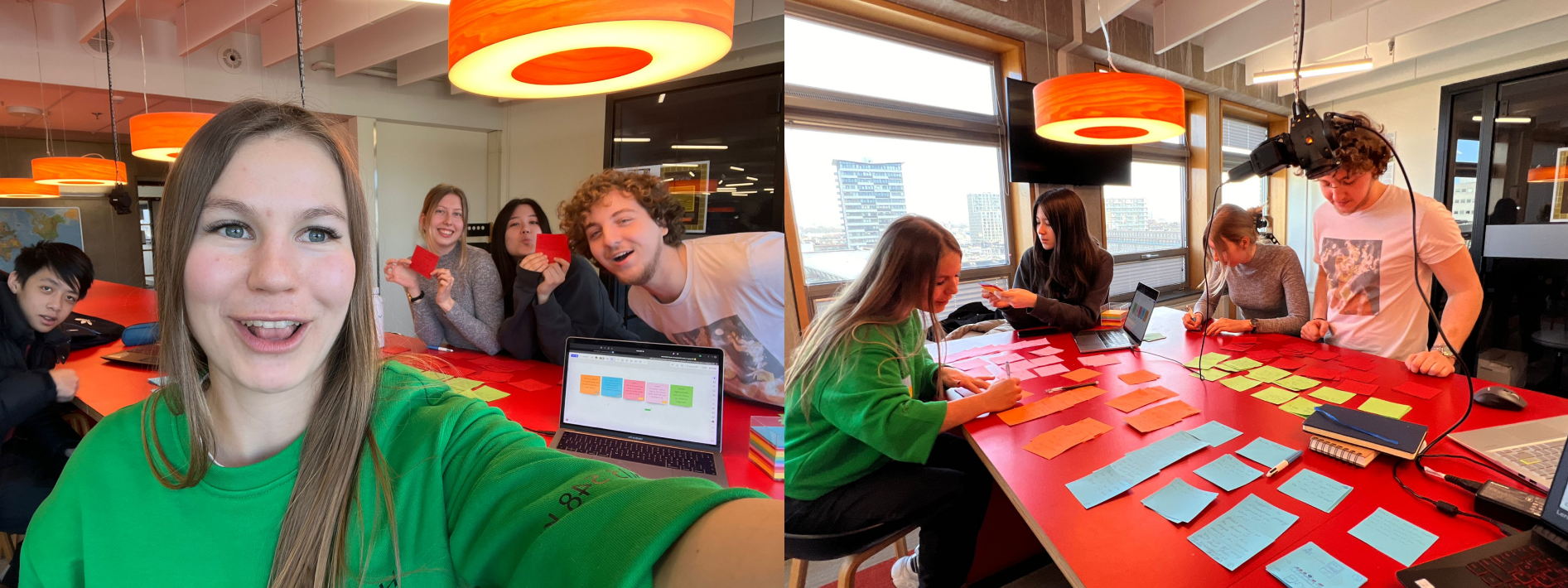
During our ideation session, we brainstormed a variety of creative ideas, narrowing them down to 20 concepts — 5 from each team member. From those, we selected 4 to present to the client, and ultimately created this one as the final direction.
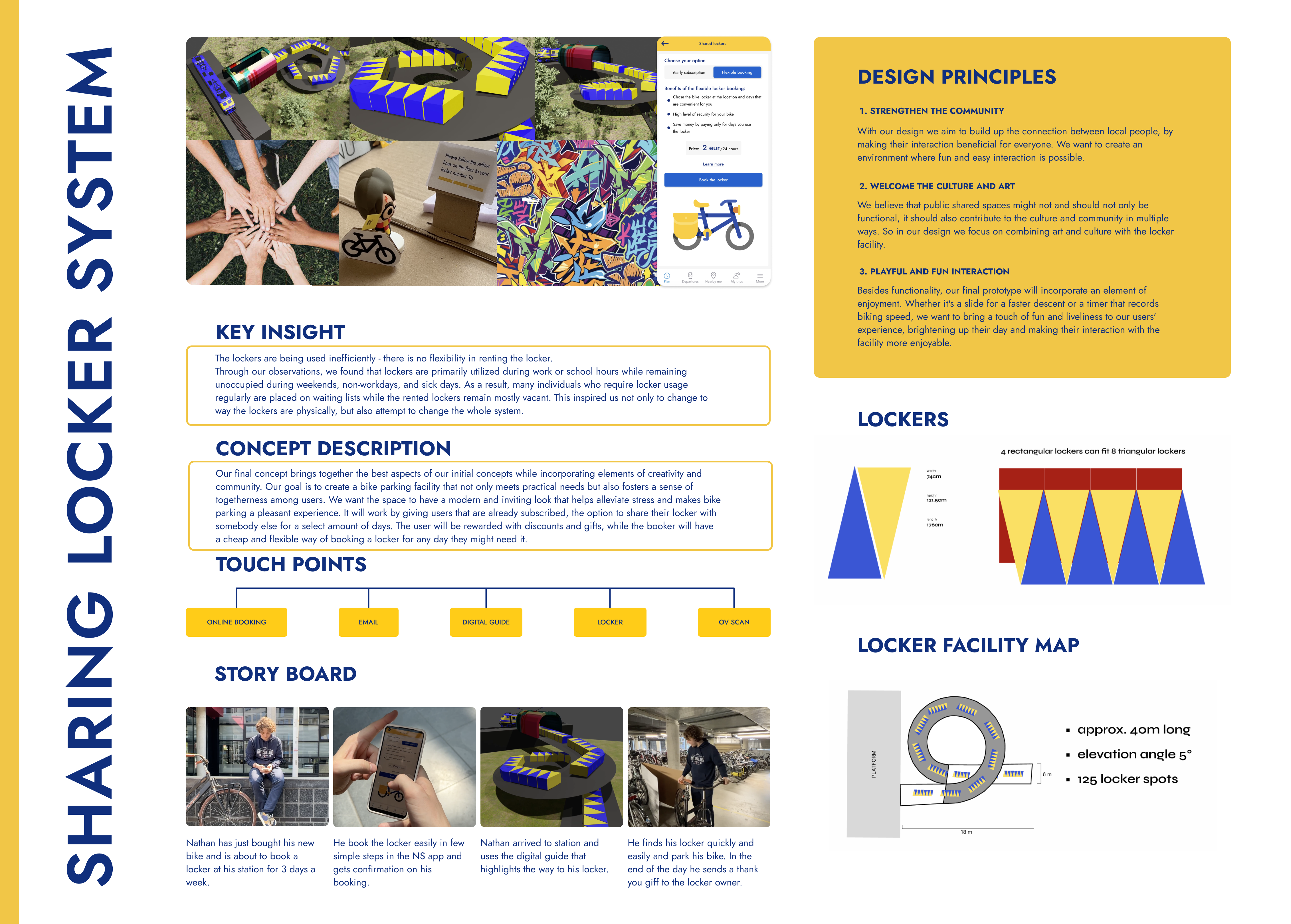
We completed a total of four iterations, starting with a 2D map of the environment. Next, we calculated the building measurements, including slope elevations, to ensure the journey would be easy for bike riders. Following that, we built a paper prototype of the entire building and its surroundings, which we then tested for usability.

We then incorporated the feedback and continued refining the flow during the second and third iterations.
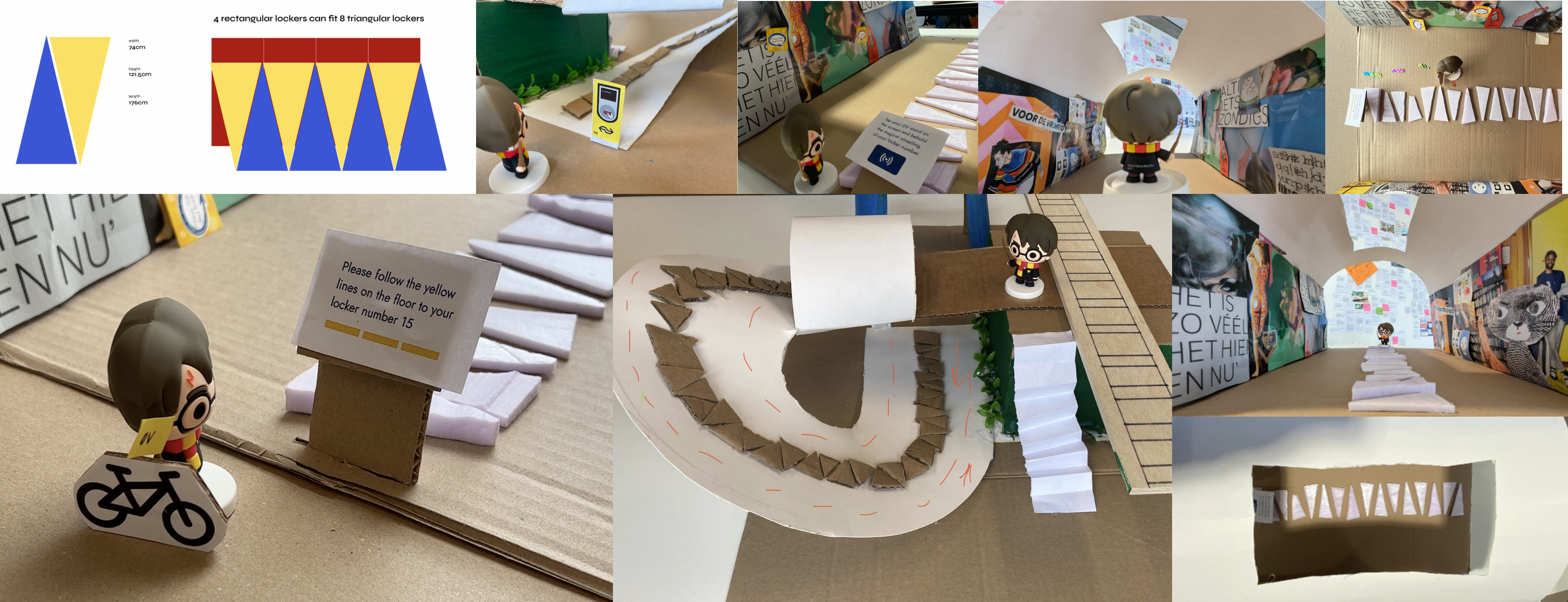
The final iteration focused on the digital aspect of our design, specifically the new feature for the bike lockers.
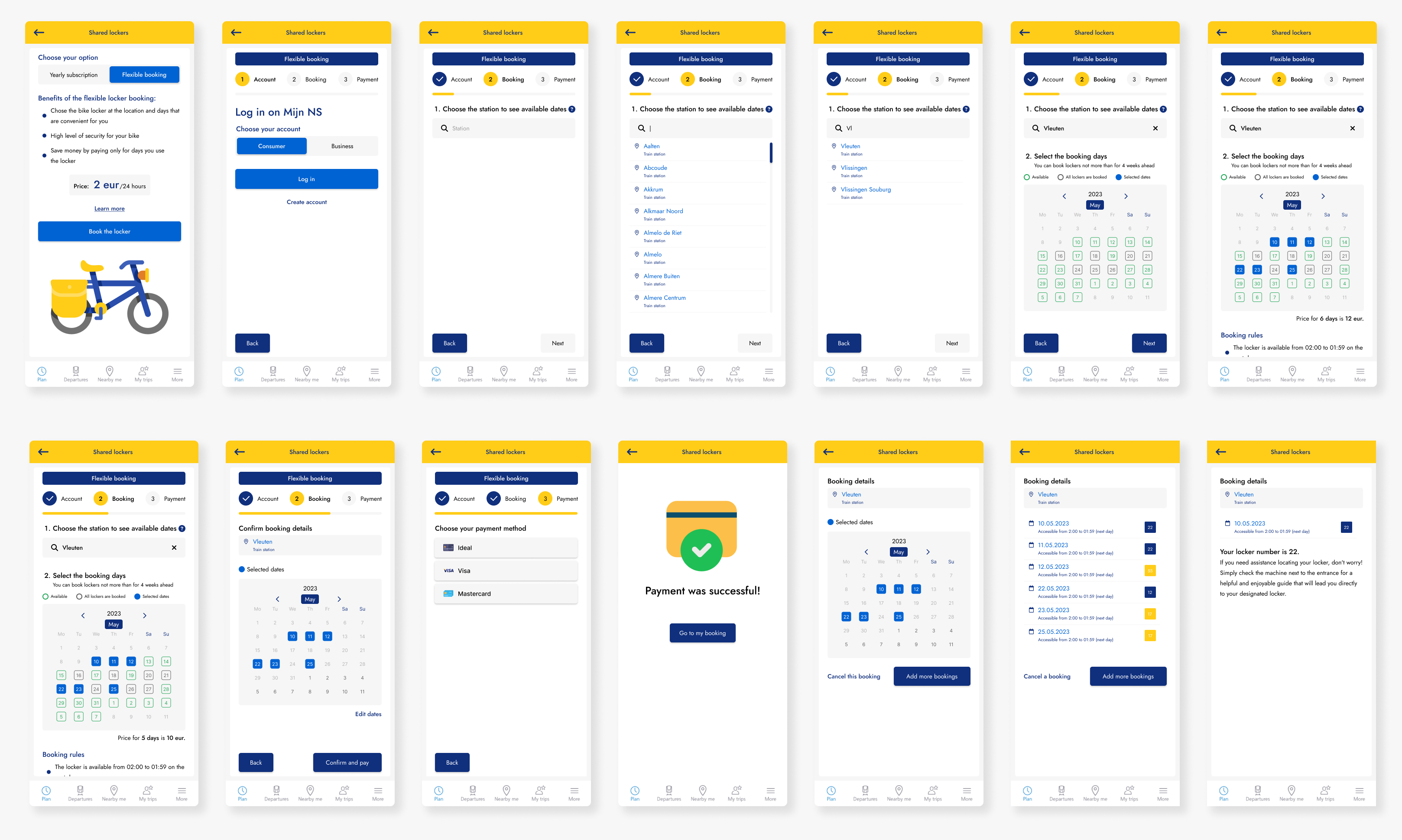
Here, you can view our final design in a 3D model, along with the new app features. For a complete experience of our design, check out the video below.
